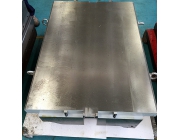in production, excess materials that are removed from rough or workpiece are often seen. These materials are called mechanical allowance. Machining allowance is also divided into two types: blank allowance and process allowance. Blank allowance refers to the error of blank size and design dimension of part drawing, also known as total machining allowance. The inter process margin refers to the allowance that each process should remove, which is equal to the difference between the sizes of the two adjacent processes.
Machining allowance sometimes needs to specify single or double margins. The one side allowance refers to the radius or the allowance of a surface, while the double-sided allowance refers to the machining allowance of diameter or relative two surfaces.
The size of the machining allowance not only affects the size of the blank, but also has a certain impact on the special process equipment. For example: forging die, die, casting mold size, equipment adjustment, cutting parameters selection, material consumption, process quota and processing time quota. If the machining allowance is increased, material and labor hours will be wasted, and tools and power will be wasted. If the reserved allowance is smaller, the effect of stress and strain and thermal deformation in the process will result in the waste of blank or workpiece due to the shortage of allowance. Therefore, it is very important to determine the machining allowance reasonably.




















